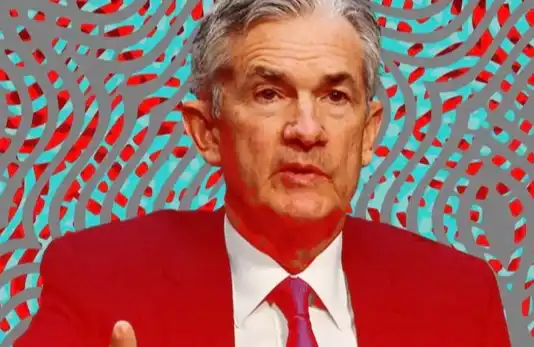When Retail FUDs, Crypto VCs Quietly Accumulate These Projects
Original Article Title: In Market Crash, What Should You Buy? Crypto VCs Are Making These Bets
Original Article Author: Steven Ehrlich, Unchained
Original Article Translation: Yuliya, PANews

The global financial market has recently experienced severe turmoil, and the cryptocurrency sector has not been spared. However, as the investment world often says, market downturns often create rare buying opportunities for visionary investors. In this turbulent environment, understanding the positioning strategy of professional investors is particularly important.
Due to President Trump's announcement last Wednesday of large-scale and indiscriminate global sanctions, cryptocurrencies continued to decline along with the overall market. At the time of writing, Bitcoin has fallen by 5.86% since then, even after a slight recovery following its first drop below $75,000 (the first time since the November 5 election). Other large-cap cryptocurrencies such as ETH, Solana, and XRP have also performed poorly during this period, lagging behind the market leader.

In such a market environment, market panic is clearly on the rise. The Cboe VIX index, which measures expected stock market volatility, has touched 60 for the first time since the outbreak of the COVID-19 pandemic, while Deribit's Bitcoin Volatility Index (DVOL), as the closest cryptocurrency market proxy to VIX, has risen by nearly 30% in the past week.
In this situation, investors seeking refuge—or in other words, buying US Treasuries—is a natural response. However, the investment world has a common saying: "Be fearful when others are greedy, and be greedy when others are fearful." This means that now is the time to buy blue-chip assets at a discount. To understand how professional funds are positioning themselves in the cryptocurrency market during this volatility, two main venture capital investors who requested anonymity shared insights into their respective companies' strategies and provided key information on which categories and industries may perform best in the coming weeks and months.
Store of Value: Bitcoin and Ethereum
While not surprising, both interviewees believe that Bitcoin is still the preferred choice. Gold has recently hit new highs and is widely considered a symbol of a safe-haven asset. At the same time, Bitcoin is increasingly showing its attributes as a "digital store of value." Despite recent price fluctuations, there is still significant room for growth between Bitcoin and gold based on market capitalization comparisons.

The current market value of gold is approximately $20.4 trillion, while Bitcoin's market value is only $1.64 trillion. An investor pointed out: "For Bitcoin to reach a 1:1 market value ratio with gold, it would need to increase by at least 12 to 15 times. In the current environment, this is the most straightforward and confident opportunity."
Ethereum is also considered an asset worth watching, although it has significantly lagged behind Bitcoin in price performance in recent years, and its ratio to Bitcoin is currently at its lowest point since the early days of the pandemic.

One interviewee mentioned that after Ethereum transitions from Proof of Work (PoW) to Proof of Stake (PoS) in 2022, its monetary policy tends toward deflation, allowing it to some extent to embrace Bitcoin's "store of value" narrative. Despite recent poor network usage and a slight uptick in inflation, from a valuation perspective, the current price is at a historical low.
Another investor stated: "Ethereum being this low right now is indeed a good buying opportunity."

Solana and DeFi Opportunity
Decentralized Finance (DeFi) tokens have generally suffered setbacks this year, with native tokens of trading platforms and lending protocols such as Uniswap, Aave, Curve, and Compound experiencing a nearly 50% decline from the beginning of the year. However, both investors believe that in the current macro environment of ongoing tightening, this sector is likely to stage a strong rebound.

One of them pointed out that during a period of low stablecoin yields, DeFi may see a return of funds. This is because in on-chain lending portfolio loop operations, there are still ways to achieve relatively high returns. "This is similar to the situation in 2021," he added.
Two projects worth focusing on are Raydium and Hyperliquid. The former is a traditional automated market maker trading platform built on Solana, similar to Uniswap; the latter focuses on perpetual contracts and is a cash-settled derivative.

If one is unwilling to pick a single token, attention can also be paid to Solana itself. "Solana is somewhat like an index fund for DeFi. There are many very interesting DeFi projects developing on it."
EigenLayer and Near: The Next Infrastructure Opportunity
Both investors believe that last year's hot concept of "AI + Blockchain" was mostly overhyped. One of them bluntly stated, "Basically, it's all vaporware projects." However, he also pointed out that this situation is not uncommon in early-stage trends, just like the ICO craze of 2017. "The first wave is usually vaporware projects, but there is also a little bit of real substance in them, and those are what's worth paying attention to in the following years."
They believe that the next phase of the AI narrative is more likely to focus on "AI agents," such as automated booking travel bots. The question is, how to ensure that the funds deposited into these agent programs will not be stolen? One way to do this is to have their security guaranteed by the security of Ethereum itself.
However, Ethereum is not suitable for all projects, mainly due to high transaction costs and the need for some applications to operate cross-chain. EigenLayer was born in this context, providing applications with a "shared trust layer" that allows projects to leverage Ethereum's security without needing to fully deploy on its mainnet.
"Once your application runs on EigenLayer, its fund security is guaranteed by Ethereum," one investor stated. He also specifically mentioned that Near could also benefit from this trend.
EigenLayer was once one of the most anticipated projects in the market, but its token launched in October last year, close to the peak of the bull market, and then the price plummeted by over 80%. However, if the current narrative holds, this actually means that investors can buy in at a significant discount. One investor added, "EigenLayer's market cap is still less than $1 billion now, this is the opportunity to buy and hold."

Overall, although the crypto market is still digesting uncertainty at the macro and policy levels in the short term, for institutional investors, now is a crucial time to reallocate assets and position for a new uptrend cycle. From store of value assets to infrastructure and DeFi platforms, to emerging AI interactive applications, the direction of fund bets has gradually emerged.
Welcome to join the official BlockBeats community:
Telegram Subscription Group: https://t.me/theblockbeats
Telegram Discussion Group: https://t.me/BlockBeats_App
Official Twitter Account: https://twitter.com/BlockBeatsAsia
 Forum
Forum OPRR
OPRR Finance
Finance
 Specials
Specials
 On-chain Eco
On-chain Eco
 Entry
Entry
 Podcasts
Podcasts
 Data
Data

 Summarized by AI
Summarized by AI







